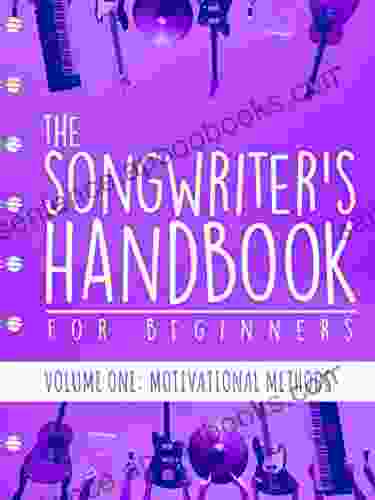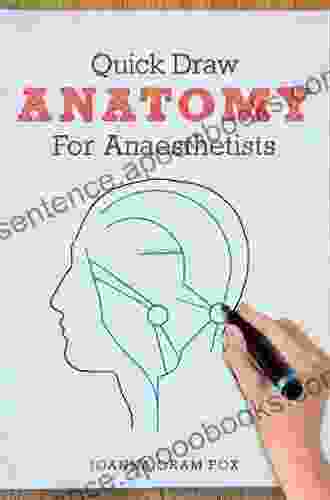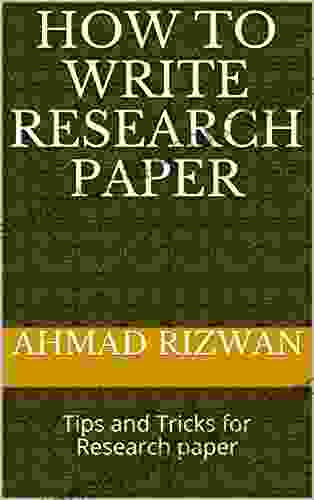How to Write Research Paper: A Comprehensive Guide

5 out of 5
| Language | : | English |
| File size | : | 7058 KB |
| Text-to-Speech | : | Enabled |
| Screen Reader | : | Supported |
| Enhanced typesetting | : | Enabled |
| Print length | : | 9 pages |
| Lending | : | Enabled |
Writing a research paper can be a daunting task, especially if you're new to academic writing. But with the right guidance, you can master the art and produce an exceptional paper that demonstrates your research skills and analytical abilities.
This comprehensive guide provides a step-by-step approach to writing a research paper, covering all stages from choosing a topic to formatting and submitting. Whether you're a student or a researcher, this guide will empower you to write a well-structured, well-argued, and well-written paper that will impress your readers.
Step 1: Choosing a Topic
The first step in writing a research paper is to choose a topic that you find interesting and that aligns with the requirements of your course or research project. Consider the following factors when choosing a topic:
- Interest: Choose a topic that you're passionate about or that you find intriguing. This will make the writing process more enjoyable and will help you stay motivated.
- Relevance: Make sure the topic is relevant to your course or research project. It should also be specific enough to allow for a thorough investigation within the scope of your paper.
- Availability of Sources: Research the topic to ensure that there are sufficient academic sources available to support your arguments. A topic with limited sources will make it difficult to write a comprehensive paper.
Step 2: Conducting Research
Once you have chosen a topic, it's time to start conducting research. This involves gathering information from various sources to develop a comprehensive understanding of your topic. Here are some tips for conducting effective research:
- Use credible sources: Rely on academic journals, books, and other peer-reviewed sources to ensure the reliability and accuracy of your information.
- Read actively: When reading sources, take notes, highlight key points, and identify arguments and evidence that support your topic.
- Synthesize information: Don't just copy and paste information from sources. Analyze and synthesize the information to form your own unique perspective on the topic.
Step 3: Creating an Outline
An outline is a roadmap that will guide you through the writing process. Before you start writing, take some time to create an outline that includes the following elements:
- : Introduce your topic, state your thesis statement, and provide a brief overview of the paper's structure.
- Body Paragraphs: Organize your main arguments and evidence into body paragraphs. Each paragraph should focus on a specific subtopic and support your thesis statement.
- : Summarize your main arguments, restate your thesis statement, and provide a final thought or recommendation.
Step 4: Writing the Paper
With your outline in place, you can start writing the paper. Follow these tips to write a well-structured and well-written paper:
- Use clear and concise language: Avoid using jargon or technical terms that your readers may not understand. Write in an accessible style that is easy to read and follow.
- Support your arguments with evidence: Cite sources throughout your paper to support your claims and arguments. Use quotations, paraphrases, and summaries to provide evidence for your ideas.
- Maintain a consistent tone and style: Throughout the paper, use a consistent tone and writing style. Avoid sudden shifts in language or perspective.
Step 5: Referencing and Formatting
Once you have written the paper, it's important to properly reference your sources and format the paper according to academic standards. Here are some guidelines:
- Referencing: Use a consistent referencing style (e.g., APA, MLA, Chicago) to cite your sources in the text and create a reference list at the end.
- Formatting: Follow the formatting guidelines provided by your instructor or university. This includes font size, margins, spacing, and page layout.
Step 6: Editing and Proofreading
Before submitting your paper, take some time to edit and proofread it carefully. Here are some tips:
- Check for grammar and spelling errors: Use a grammar and spell checker, but don't rely on it completely. Read through the paper yourself to identify and correct any errors.
- Check for flow and consistency: Read the paper aloud to ensure that the flow is smooth and the arguments are presented coherently.
- Get feedback from others: Ask a trusted friend, colleague, or tutor to review your paper and provide feedback on clarity, organization, and overall quality.
Writing a research paper is a challenging but rewarding experience. By following the steps outlined in this guide, you can produce an exceptional paper that demonstrates your research skills, critical thinking abilities, and writing proficiency. Remember, the key is to approach the writing process with a systematic and organized approach, and to seek feedback and support whenever needed.
With dedication and perseverance, you can master the art of research paper writing and produce a paper that you can be proud of.
Unlock the secrets to writing exceptional research papers with our comprehensive guide. Download your copy today and start writing with confidence!
Download Guide
5 out of 5
| Language | : | English |
| File size | : | 7058 KB |
| Text-to-Speech | : | Enabled |
| Screen Reader | : | Supported |
| Enhanced typesetting | : | Enabled |
| Print length | : | 9 pages |
| Lending | : | Enabled |
Do you want to contribute by writing guest posts on this blog?
Please contact us and send us a resume of previous articles that you have written.
 Book
Book Novel
Novel Page
Page Chapter
Chapter Text
Text Story
Story Genre
Genre Reader
Reader Library
Library Paperback
Paperback E-book
E-book Magazine
Magazine Newspaper
Newspaper Paragraph
Paragraph Sentence
Sentence Bookmark
Bookmark Shelf
Shelf Glossary
Glossary Bibliography
Bibliography Foreword
Foreword Preface
Preface Synopsis
Synopsis Annotation
Annotation Footnote
Footnote Manuscript
Manuscript Scroll
Scroll Codex
Codex Tome
Tome Bestseller
Bestseller Classics
Classics Library card
Library card Narrative
Narrative Biography
Biography Autobiography
Autobiography Memoir
Memoir Reference
Reference Encyclopedia
Encyclopedia Elle Cosimano
Elle Cosimano Elizabeth Gibson
Elizabeth Gibson Da Shaun L Harrison
Da Shaun L Harrison Gorg Huff
Gorg Huff Trent Shelton
Trent Shelton Jeffrey Mankoff
Jeffrey Mankoff De Ann Black
De Ann Black Hallie Rubenhold
Hallie Rubenhold Emily Kerr
Emily Kerr Dan Coates
Dan Coates Posie Graeme Evans
Posie Graeme Evans Andrew Paquette
Andrew Paquette Dwayne Wong Omowale
Dwayne Wong Omowale Rob Cowen
Rob Cowen Chaitanya Limbachiya
Chaitanya Limbachiya Benjamin T Walker
Benjamin T Walker Frank Buck
Frank Buck T Z Chowdhury
T Z Chowdhury Kevin Winchester
Kevin Winchester Kenneth Nevarez Hernandez
Kenneth Nevarez Hernandez
Light bulbAdvertise smarter! Our strategic ad space ensures maximum exposure. Reserve your spot today!

 Carlos FuentesMaster the Art of Drawing: Unlock Your Inner Artist with "Drawing Your Way"
Carlos FuentesMaster the Art of Drawing: Unlock Your Inner Artist with "Drawing Your Way"
 Jason ReedHot Mess Emily Belden: A Must-Read for Anyone Trying to Find Their Footing in...
Jason ReedHot Mess Emily Belden: A Must-Read for Anyone Trying to Find Their Footing in...
 John Dos PassosUnveiling the Easiest Way to Hunt Deer: A Comprehensive Guide for Beginners
John Dos PassosUnveiling the Easiest Way to Hunt Deer: A Comprehensive Guide for Beginners Jonathan FranzenFollow ·13.9k
Jonathan FranzenFollow ·13.9k Leon FosterFollow ·3.9k
Leon FosterFollow ·3.9k Tim ReedFollow ·10.3k
Tim ReedFollow ·10.3k Howard PowellFollow ·6.4k
Howard PowellFollow ·6.4k Joseph ConradFollow ·19.2k
Joseph ConradFollow ·19.2k Tom HayesFollow ·19.5k
Tom HayesFollow ·19.5k Alexander BlairFollow ·10.4k
Alexander BlairFollow ·10.4k Colin RichardsonFollow ·5.3k
Colin RichardsonFollow ·5.3k

 Julian Powell
Julian PowellShetland Pony: Comprehensive Coverage of All Aspects of...
The Shetland...

 Cason Cox
Cason CoxHow Anaesthetics Changed the World: A Medical Revolution...
Imagine a world where surgery is an...

 Harold Powell
Harold PowellUnleash Your Inner Songwriter: The Ultimate Guide for...
Calling all aspiring songwriters!...

 Nikolai Gogol
Nikolai GogolUnleash Your Artistic Potential: Quick Draw Anatomy for...
In the dynamic and visually...

 Tim Reed
Tim ReedThe Rock 'n' Roll Life of Legendary Sax Man Bobby Keys
The Rock 'n' Roll Life...

 Damon Hayes
Damon HayesMoney Management Activities for Youth: A Guide to...
In an era marked by rapidly...
5 out of 5
| Language | : | English |
| File size | : | 7058 KB |
| Text-to-Speech | : | Enabled |
| Screen Reader | : | Supported |
| Enhanced typesetting | : | Enabled |
| Print length | : | 9 pages |
| Lending | : | Enabled |






